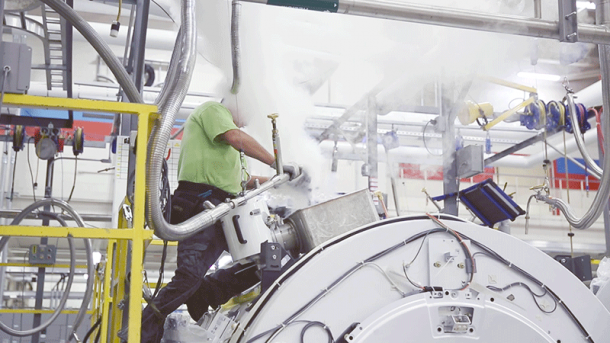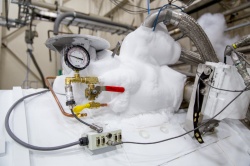Freelium
Setting Helium Free: Revolutionary MRI Tech
Helium, a critical component in MRI systems, has gone through two potential shortage crises, impacting hospitals and patients around the globe. But the helium supply is finite and demand has been rising over the past decades. At #RSNA16, GE Healthcare proudly unveils Freelium*, a magnet technology designed to use one percent of liquid helium compared to conventional MRI magnets. Instead of the average 2,000 liters of precious liquid helium, Freelium is designed to use only about 20 liters.


MRI uses superconducting magnets cooled to -452 degrees F in order to take hi-def pictures of a patient’s brain, vital organs, or soft tissue. The only way to keep MRI magnets currently in clinical use that cold is by using thousands of liters of liquid helium mined from below the earth’s crust. Magnets with Freelium technology are designed to be less dependent on helium, much easier to site, and eco-friendly. Thanks to Freelium technology, hospitals would no longer need extensive venting that often necessitates siting a magnet in a separate building or newly constructed room.
Additionally, a Freelium magnet would not need any refilling during transportation nor throughout its lifetime. Therefore, when the Freelium technology is integrated into a commercialized product in the future, it could make MRI more accessible and less expensive to site and operate. This is particularly important in developing regions that lack necessary infrastructure, and in major metropolitan cities where siting a magnet can cost more than the magnet itself. Patients who currently do not have access to the diagnostic benefits of MRI today may have access in the future due to this breakthrough technology.
“At GE Healthcare, we work to solve our customer’s biggest problems,” said Stuart Feltham, magnet engineering leader of GE Healthcare MR. “The fact that MRIs require so much liquid helium adds cost, complication, and makes the systems difficult to install; Freelium technology is designed to aggressively address these challenges. It’s a revolutionary advance for the industry and we look forward to integrating Freelium technology into MRI systems so clinicians and their patients can benefit from it in the near future. There is still more than 70 percent of world’s population with no access to MRI. Our vision is to leverage this low-helium technology to increase world-wide accessibility of MRI so that more people can benefit from its diagnostic capabilities.”
For more informations on GE Healthcare at #RSNA16 visit www.gehealthcare.com/rsna2016
Source: GE Healthcare
28.11.2016











